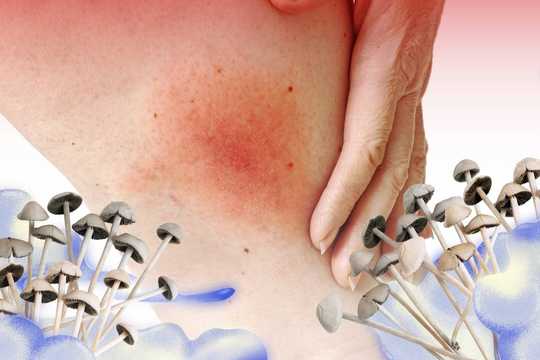Who thinks of mdma-assisted psychotherapy when healing trauma? It’s not usually the public at-large. That’s why I feel my experience can help bring healing into the mainstream.
In my role as a social worker and psychotherapist, I see so many clients suffering from the repercussions of trauma: experiences of abuse, neglect, and discrimination. These traumas leave them struggling to feel safe on a fundamental level.
Healing from Trauma
Healing from these traumas invariably focuses on helping these clients overcome feelings of disempowerment and disconnection. At the same time, it promotes rebuilding interpersonal trust and intimacy in the context of the therapeutic relationship.
At the same time, there is growing recognition in the mental health field that we must address trauma across multiple levels. We must not only approach it interpersonally or psychologically, but physiologically as well. We must also heal the way trauma inscribes itself on the brain and body, leaving survivors hijacked by nervous systems that vault into fight, flight, or freeze at a moment’s notice.
That is why it is imperative that social workers and all mental health professionals, take notice when a new promising treatment comes along that seems to treat trauma across these multiple levels. The limited, adjunctive use of MDMA (3,4-methylenedioxymethamphetamine) in psychotherapeutic treatment for posttraumatic stress disorder (PTSD) presents just such a treatment.
MDMA-Assisted Psychotherapy as Breakthrough Treatment
Research on MDMA-assisted psychotherapy for PTSD has been growing over the past 15 years, showing remarkable success in clinical trials. The FDA granted it “breakthrough therapy” status in 2017 based on these strong results.
For example, a 2011 study found that 83% of those receiving a combination of supportive psychotherapy and two MDMA-assisted psychotherapy sessions no longer met criteria for a PTSD diagnosis after treatment. This compared to only 25% of those who received the same supportive psychotherapy and a placebo [1].
Moreover, these studies were working with the hardest-to-treat cases. These were clients whose PTSD had failed to respond to other treatments. This includes for example: prolonged exposure therapy, other cognitive behavioral therapies, or pharmaceutical medications. Follow-up studies have shown that the majority of those helped are still PTSD-free nearly four years later [2].
Inspired to Further Study
These striking findings led my colleague Dr. Sara Bressi and I to explore the potential of this treatment. Our interest was especially heightened given the stigma often attached to MDMA. This stigma stems from MDMA being the primary ingredient in the recreational drug “molly” or “ecstasy.” However, these substances found in recreational settings are rarely observed to be pure MDMA.
This article is a summary of the findings from our recent paper on this topic. Read on to learn why mental health professionals are in dire need of better treatment for PTSD and how MDMA-assisted psychotherapy works. Also included is how important a treatment like this could be for addressing the immense burden of trauma in vulnerable communities, especially communities of color and low-income communities.
Treating PTSD is an Uphill Battle
For those with PTSD, past traumatic events intrude upon their daily life. These intrusions come in the form of flashbacks, nightmares, and pervasive anxiety and hyper-vigilance. These afflictions make it difficult for them to engage in day-to-day life, and can make it especially difficulty to talk about or reflect on their traumatic experiences.
In an attempt to minimize their symptoms, individuals with PTSD often avoid anything that could trigger them. As a result, they begin to isolate themselves from the world and others. This produces consequences that tragically cut them off from the potentially healing effects of relationships. This occurs both within their personal lives and within the context of therapy.
Existing PTSD treatments try to reduce these symptoms in a few different ways. Psychiatric medications try to change brain chemistry to reduce anxiety. Exposure therapies try to de-link trauma triggers from the strong fear response. Skills-focused therapies target areas such as emotional coping and interpersonal skills. Finally, other trauma-informed approaches try to create a sense of safety in session. Ultimately this rebuilds trust over time and extends outside of the therapy room.
Unfortunately, these treatments often have mixed results and do not meet the needs of all people with PTSD. Studies in veterans, for example, show that more than 70% of those engaging in PTSD treatment do not see significant improvement [3].
How Does MDMA-Assisted Psychotherapy Work?
In MDMA-assisted psychotherapy, the MDMA acts as a catalyst for the therapeutic process, working synergistically with regular psychotherapy sessions. Biochemically, MDMA releases chemicals that increase a sense of well-being, enhance empathy and feelings of closeness to others, and dramatically reduce fear and anxiety [4].
A potentially key ingredient in this process is oxytocin, sometimes called the “love hormone” because we release it when we bond socially, when we are with people we care about, and even when we cuddle with our pets.
In a course of MDMA-assisted psychotherapy, traditional talk therapy is interspersed with two or three medicated sessions. These medicated sessions occur over 6-8 hours, which is the drug’s duration plus a few hours. Sessions are done under medical supervision, and consist of periods of quiet introspection and client-led discussion of traumatic material, facilitated by two therapists [5].
Next Step – Integration
Non-drug psychotherapy sessions then help process and understand what came up for client while on the drug. After treatment, which generally occurs over 8-15 weeks, the majority of participants are not only PTSD-free, they report an “increased self-awareness,” “increased ability to feel emotions,” and “improved relationships in general” [6].
Though research on why MDMA is such a powerful catalyst is still new, in our paper we hypothesize that MDMA’s fear-reducing and pro-social affects work together to help clients tap into their capacity to heal. In turn, this allows them to engage in therapy faster and more profoundly than they could otherwise.
The fear-reducing effects help clients think and talk about their trauma without being as hijacked by flashbacks or panic symptoms. This enables them to gain perspective on what happened to them and integrate it into a larger narrative of their lives.
The pro-social effects help clients trust and bond with their therapists and “take in” the support and empathic attunement they provide. Normally this is a task that is especially difficult for those who have had their trust violated through interpersonal trauma and abuse.
Moving Forward: How this Treatment Could Be a Game-Changer
That MDMA-assisted psychotherapy has worked so rapidly, and so effectively, in many people who have not responded to existing treatments is a powerful testament to its potential. More so considering low-income communities and communities of color who disproportionately experience trauma [7].
At the same time, it is unclear what access to this treatment will be like for these populations. People of color and low-income individuals already face the dual hurdle of being more likely to experience trauma, and less likely to have reliable access to health care. Thus it will be essential that social workers be attuned to these potential barriers and be fierce advocates for access to this breakthrough treatment [8].
First and foremost, trauma survivors have experienced ruptures in trust—trust in others, in the safety of the world, and in their own inherent value [9]. Too often, these ruptures are then tragically re-experienced in relationships with loved ones, clinicians, and institutions.
If MDMA-assisted psychotherapy, in helping clients move toward spaces of empathy and trust, can facilitate and accelerate repair of these ruptures, its use will have repercussions far beyond the treatment of PTSD symptoms.
It could enable clinicians to more readily, more consistently, and more profoundly tap into what psychotherapy at its best offers. That optimal result is a pathway toward more fully, authentically, and lovingly engaging with themselves and their lives.
References
- Mithoefer, Michael, Mark T. Wagner, Ann T. Mithoefer, Lisa Jerome, and Rick Doblin. “The safety and efficacy of ±3,4-methylenedioxymethamphetamine-assisted psychotherapy in subjects with chronic, treatment-resistant Posttraumatic stress disorder: The first randomized controlled pilot study.” Journal of Psychopharmacology 25, no. 4 (2011): 439-452.
- Morina, Nexhmedin, Jelte M. Wicherts, Jakob Lobbrecht, Jakob, and Stefan Priebe. “Remission from post-traumatic stress disorder in adults: A systematic review and meta-analysis of long term outcome studies.” Clinical Psychology Review 34, no. 3 (2014)” 249-255.
- Steenkamp, Maria M., Brett T. Litz, Charles W. Hoge, and Charles R. Marmar. “Psychotherapy for military-related PTSD: A review of randomized clinical trials.” JAMA 314, no. 5 (2015): 489-500.
- de la Torre, Rafael, Magi Farré, Pere Roset, Neus Pizarro, Sergio Abanades, Mireia Segura, Jordi Segura, and Jordi Cami. “Human pharmacology of MDMA: Pharmacokinetics, metabolism, and disposition.” Therapeutic Drug Monitoring 26, no.2 (2004): 137-144.
- Mithoefer, Michael. A manual for MDMA-assisted psychotherapy in the treatment of PTSD (Santa Cruz, CA: Multidisciplinary Association for Psychedelic Studies, 2017).
- Mithoefer, Michael C., Mark T. Wagner, Ann T. Mithoefer, Lisa Jerome, Scott F. Martin, Berra Yazar-Klosinski, Yvonne Michel, Timothy D. Brewerton, and Rick Doblin. “Durability of improvement in post-traumatic stress disorder symptoms and absence of harmful effects or drug dependency after 3,4-methylenedioxymethamphetamine-assisted psychotherapy: A prospective long-term follow-up study.” Journal of Psychopharmacology 27, no. 1 (2013): 28-39.
- Slopen, Natalie, Jack P. Shonkoff, Michelle A. Albert, Hirokazu Yoshikawa, Aryana Jacobs, Rebecca Stoltz, and David R. Williams. “Racial disparities in child adversity in the U.S.: Interactions with family immigration history and income.” American Journal of Preventive Medicine 50, no. 1 (2016): 47-56.
- Roberts, Andrea L., Stephen E. Gilman, Joshua Breslau, Naomi Breslau, and Karestan Koenen. “Race/ethnic differences in exposure to traumatic events, development of post-traumatic stress disorder, and treatment-seeking for post-traumatic stress disorder in the United States.” Psychological Medicine 41, no. 1 (2010): 71-83.
- Herman, Judith L. Trauma and recovery. (New York, NY: BasicBooks, 1997).






